
wm5806
-
Posts
230 -
Joined
Content Type
Profiles
Forums
Blogs
Gallery
Events
Store
Posts posted by wm5806
-
-
Jewels from two other Lodges named in his honour:
[attachmentid=30511] [attachmentid=30512]

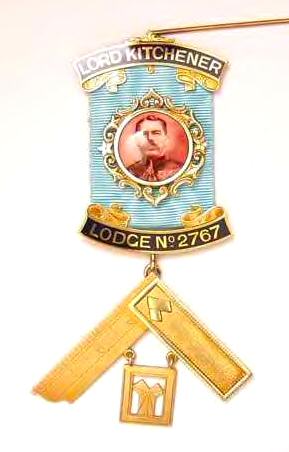

 0
0 -
Maybe they are of some intrest to you. What do you think of his prices??
http://www.okazii.ro/catalog/1365963/obiec....html#div_photo
http://www.okazii.ro/catalog/1419047/obiec...-dedicatie.html
http://www.okazii.ro/catalog/1419011/obiec...-1951-rara.html
http://www.okazii.ro/catalog/1420710/obiec...-ORIGINALA.html
his start price of 119 euro is a bit stiff, but a lot of them here think if its old its worth lots, and never mind the condition

Hello Kev
The first one and third one are Masonic, the second is from the Buffaloes and the fouth, I think, is a military medal - possibly an Iron Cross, but I do not know much about the military medals.
In my opinion, his prices for the Masonic items are high compared to eBay in Britain, where they would probably sell for between ?10 - ?20 (Euro 15,00 - 30,00).
Cannot advise on the other two.
WM5806
0 -
Here's another shot of it ..It doesn't look like a miniature ..the one next to it sure is though
You're quite right Mike, it definitely isn't a miniature.
I must admit to having seen a great range of sizes for this jewel, all with slightly different designs and keystones. If I get chance later, I will try to scan a few different examples I have.
Regards
WM5806
0 -
His VC citation stated:
On 2 January 1858 at Khodagunge, India, on following up the retreating enemy, Lieutenant Roberts saw in the distance two sepoys going away with a standard. He immediately gave chase, overtaking them just as they were about to enter a village. Although one of them fired at him the lieutenant was not hit and he took possession of the standard, cutting down the man who was carrying it. He had also on the same day saved the life of a sowar who was being attacked by a sepoy.
Interestingly his son, Lieutenant The Hon F H S Roberts, of the King's Royal Rifle Corps, also won a VC (South African War: December 15, 1899).
An incredibly brave family.
Does anyone know the Masonic 'careers' of this father and son?
0 -
And here's a picture of Lord Roberts of Kabul and Kandahar on his Celebrated Charger (From Harper's Magazine, European Edition, December 1897).
[attachmentid=29982]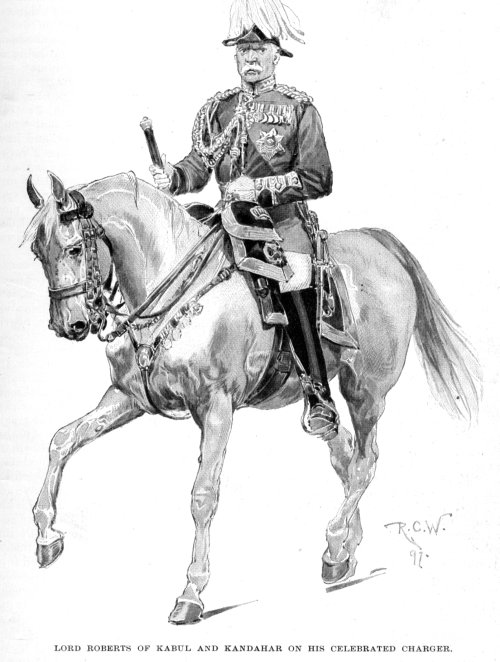
 0
0 -
As a side issue I have an old Masonic hand book and I believe it to be really quite old is there any way of dating these things-I have always been to afraid to ask.
Hi Stephen
If you would like to post the details (title, author, publisher etc), you may find someone on the board who knows about such things.
Kindest regards
0 -
A further example of a very old Mark Master Mason's breast jewel (sadly, not one I own
 ), but was for sale on a well-known auction website, earlier this year. Very unusual in that the working tools are suspended either side of the keystone.
), but was for sale on a well-known auction website, earlier this year. Very unusual in that the working tools are suspended either side of the keystone.From the style of the twisted wire bars, I assume it to be 1880-ish or earlier - can anyone enlighten us further?
[attachmentid=29880]
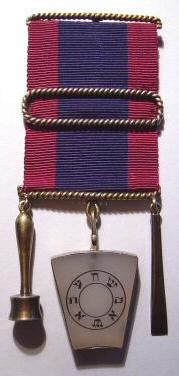
 0
0 -
 ... the centre bar has me puzzled.Never seen a solid bar before
... the centre bar has me puzzled.Never seen a solid bar before Firstly, welcome to the forum, sptregalia!
I think that the jewel in the first post is either a miniature or smaller than normal, hence the 'solid' bar rather than a buckle-type bar, which would be more difficult to make.
The central bar upon which is mounted the working tools was, according to some old regalia catalogues, a common design in the early part of the 20th Century. Earlier examples of the jewel were even to be found with the cut-glass or paste 'stones' often found adorning jewels of other degrees around that time (pictured below).
[attachmentid=29876] [attachmentid=29877]
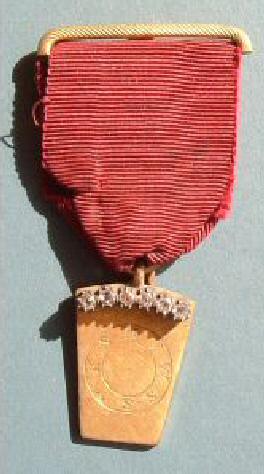


 0
0 -
Hi
Certainly there was a special buckle for the Royal Masonic Hospital and, no doubt a lapel badge, too. However, I'm pretty certain that this was an entirely different hospital and wondered whether this item was (a) masonic or nursing in origin, and (b) if masonic, was this just the ribbon bar part of a jewel?
Thanks,
WM5806
0 -
An item that was recently for sale on a 'well-known internet auction site' was this small enamel badge from the Freemasons' War Hospital.
Now I understand that this establishment opened in 1916 on the Fulham Road, on the site of the old Chelse Hospital for Women, and ran until the 1930s.
However, my question to you all is this: does anyone know whether this was a standalone, lapel-type badge, or was this part of a larger item, such as a jewel?
[attachmentid=29540]

 0
0 -
A further item from the United Order of Mechanics, but this time from a Scottish branch.
[attachmentid=29009]
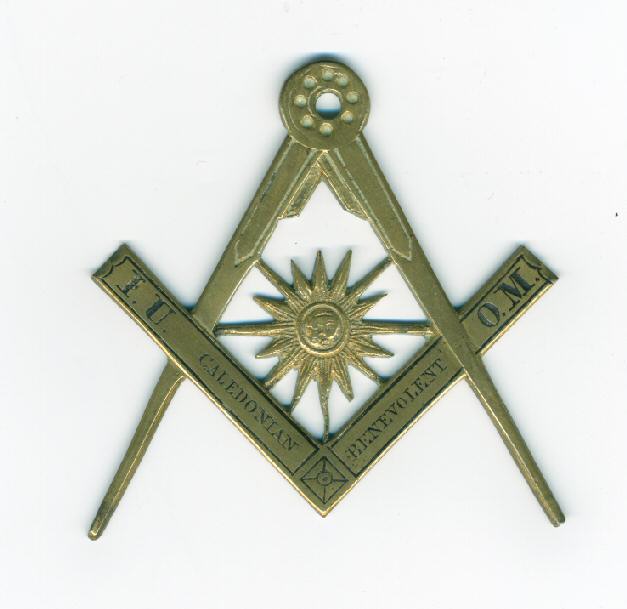
 0
0 -
[attachmentid=29003]
Any ideas what the AONS stands for, anyone?
0 -
Phew - I don't think I've seen so many Free Gardeners ' jewels before!
There are some marked similarities to Masonic jewels, in particular the rainbow and dove jewel which is similar to the Scottish Royal Ark Mariners' emblem.
Anyway, moving on.... One we've possibly all see at one time or another is the Junior Order of United American Mechanics - a square, compass and arm clutching a hammer. The latter arrangement is an obvious imitation of the 'G' sometimes seen in the S&C.
[attachmentid=29006]
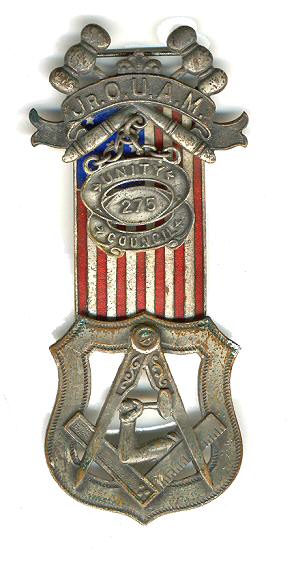
 0
0 -
A watch fob bearing similar devices:
[attachmentid=28958]
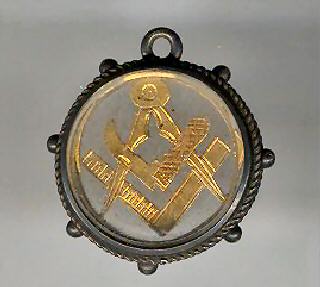
 0
0 -
Occasionally, emblems of Freemasonry are adopted or 'borrowed' by other organisations, thus making their regalia appear similar to that of Freemasonry.
Below is a jewel from the Order of Free Gardeners, a Friendly Society having its roots (no pun intended) in Scotland and the North of England. Once having an enormous membership, it declined between the World Wars, almost terminally with the Welfare reforms of the late 1940s.
In the centre of the jewel is the familiar square and compass, but with a half-open pruning knife in the angle of the square. Additionally, there is a representation of (I assume) the VSL, the Sun and Moon.
WM5806
[attachmentid=28956]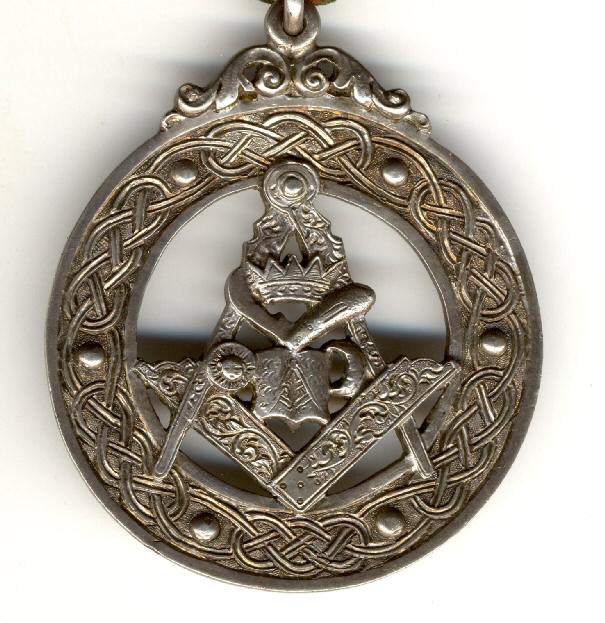
 0
0 -
The start of this weekend's offerings...
Two early jewels from the Mark Master Mason degree. I suspect that they are both English in origin, but am prepared to be told otherwise. There are no markings on the reverse.
Both jewels appear to have the same, slightly irregular, rhomboid shape indicating - to me at least - that they were produced from the same template and, therefore, probably the same maker although purchased separately from different vendors. The ribbons may or may not be original and little attention should be paid to them, I suppose.
Can anyone add any further information, please?
WM5806
[attachmentid=28768]
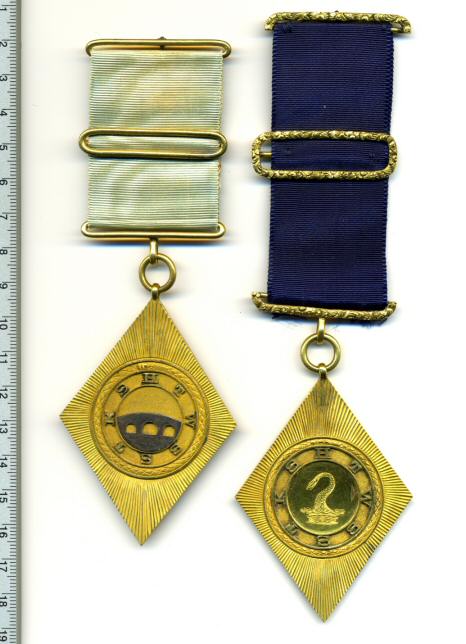
 0
0 -
A very rare medal, it is thought that there are no more than about five or six exist in the world.
I'm lucky enough to have held two different examples in my hand
Yasha Beresiner ... said there were only 3 known to exist.
True, very few are known to exist. However, in the past six years I have seen at least two in private collections that are generally not known to exist and I wonder how many others there may be. Possibly true to say that there are unlikely to be more than twenty? Certainly, you don't get many hits on Google when searching for it!
WM5806
0 -
This was recently purchased through a 'large internet auction site'.
As you can see, the pendant part of the jewel is similar to the Scottish Royal Ark Mariner's breast jewel, although the ribbon is quite different to their normal rainbow colours. The ribbon on this is reminiscent of the borders of an English (and possibly others) Royal Arch apron. I would date it as being towards the end of the 19th Century from its style and construction.
[attachmentid=28469]However, I am not really sure what it is - someone even suggested that it might be Oddfellows - and would be grateful for your suggestions and ideas.
Many thanks,
WM5806
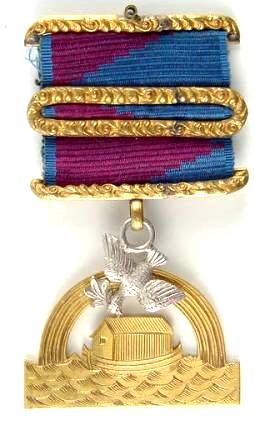
 0
0 -
Thank you Humber
I had not found that page - all is now explained.
Gratefully,
WM5806
0 -
Pictured below is a medal that I found, mounted and inset into a small wooden tray/plate.
If anyone has any further information, I would be glad to hear from them.
The legend is "ROYAL MASONIC SCHOOL FOR FEMALE CHILDREN ? PRESENTED TO ? FOR GENERAL GOOD CONDUCT" and it is inscribed to Deborah Holliday Timbs and date 1849.
Was this the forerunner of the Royal Masonic Institution (later School) for Girls?
[attachmentid=27630]
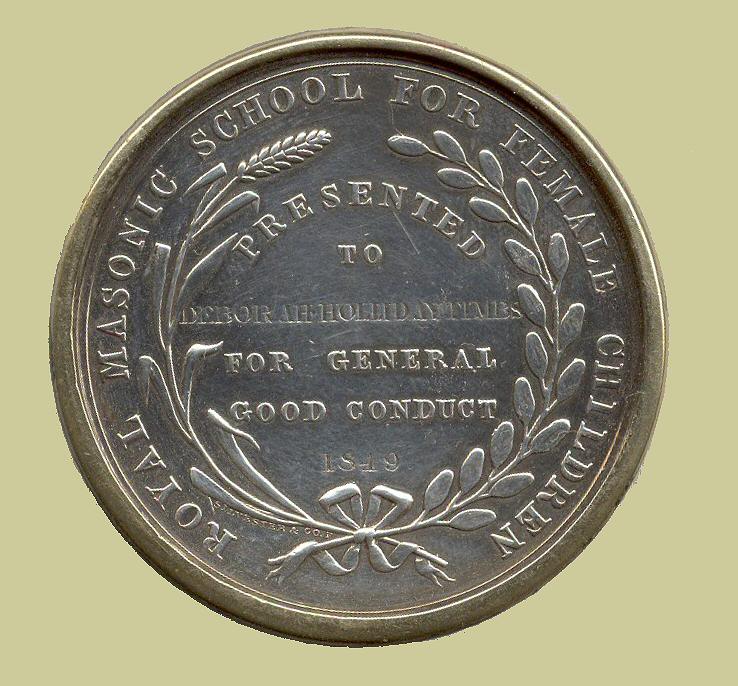
 0
0 -
At first, I thought it might have been Australian, as that was from where I bought it.
However, further study shows the coat of arms to be that of the United Grand Lodge of England, but I am still none the wiser.
Any wild guesses, at all????
0 -
And another....
This is a very early re-strike of the pre-regulation centenary jewel for St George's Lodge (112), founded in 1762, which celebrated its centenary in 1862.
The hallmarks are for 1866, making it an early re-strike, but still very desirable.
[attachmentid=27512]

 0
0 -
Here's a 1915 re-strike of the pre-regulation Centenary jewel from Lodge Star in the East (No. 67) of Calcutta, Bengal. Constituted in 1740, it was placed on the register in December 1747 and named in 1770. The original jewels were produced around 1855, having the Lodge's then number of 80, but was re-numbered in 1863 to its present number of 67.
A re-strike was issued between 1855 and 1890 which can be identified by the inscription:
Original: "Lodge Star in the East. No.80, June 1740."
Restrike #1: "Lodge Star in the East. No.67, 1740." (no "June")
This later re-strike can be dated so precisely due to the hallmark on the reverse.
WM5806
[attachmentid=27290]
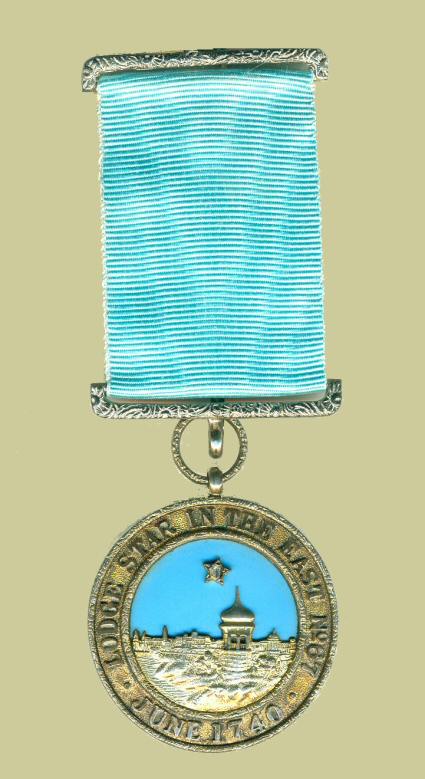
 0
0 -
I think that this is an 'Unauthorised' or unofficial jewel. I believe that Lodge of Industry and Perseverance No.109 meeting in London and formerly in Calcutta had some Centenary jewels made to their own design. These were not approved by Grand Lodge and they were subsequently used as PM jewels with the recipients' names and years of office engraved on the rim of the jewels.
According to Lane's 'Centenary Warrants and Jewels' (1891), the Lodge of Industry and Perseverance never celebrated it's centenary - which would fit with what you say. There is a foot-note on p.48 which says that
"A Special Jewel was granted by the M. W. G. M. at this late period on account of peculiar circumstances - the Lodge being "Foreign" - but not until after three separate applications; the last having been made by the Dep. Dist. G. M."
So they may have received their permission in the end, but you are right that it was an unauthorised one, at least initially. I have included the line-drawing of the jewel from Lane's book in this post (below).
I have seen enamelled versions of this, although the examples used as PM jewels in the Museum of Freemasonry at GQS are not enamelled. Does that indicate the former were re-strikes, produced much later?
[attachmentid=27097]
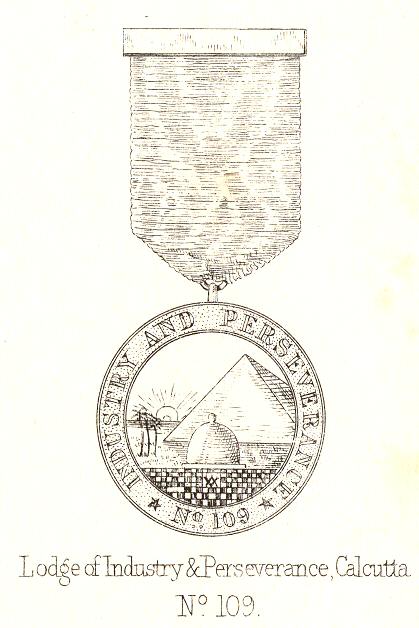
 0
0


Lord Kitchener
in Masonic Medals & Jewels
Posted · Edited by wm5806
Humber,
Please don't take this the wrong way, but reference to the MQ Magazine you highlighted says:
I'm a little confused by my misunderstanding
WM5806